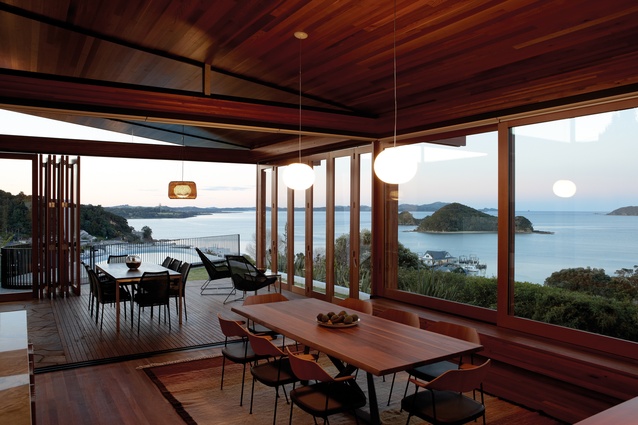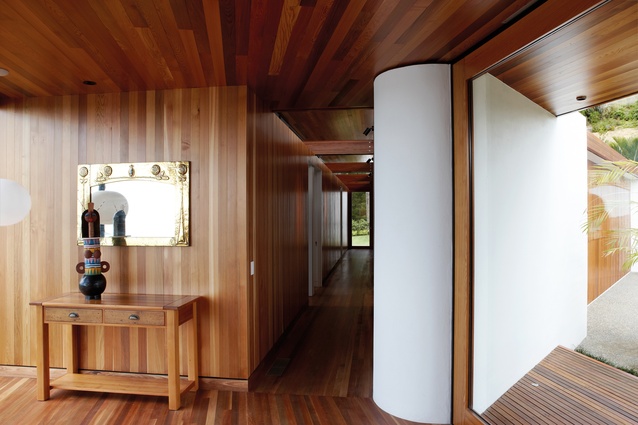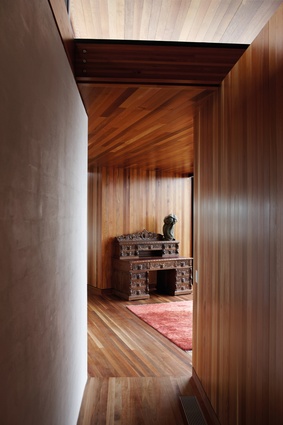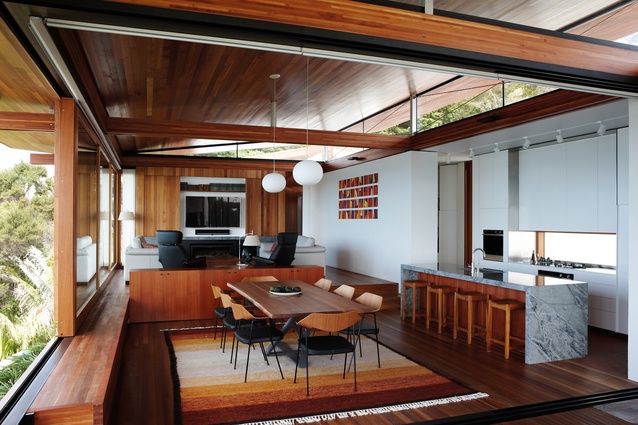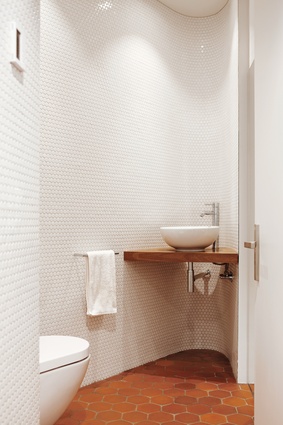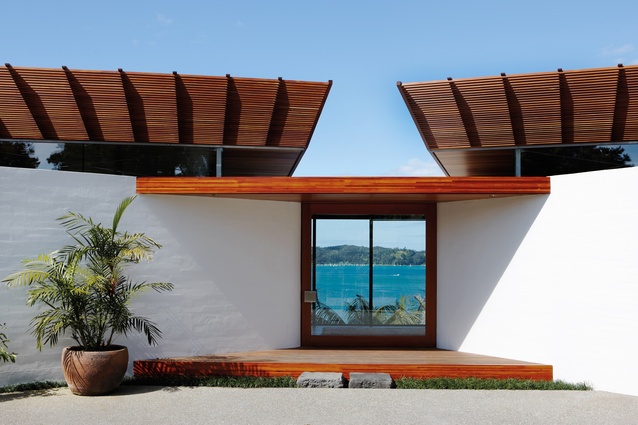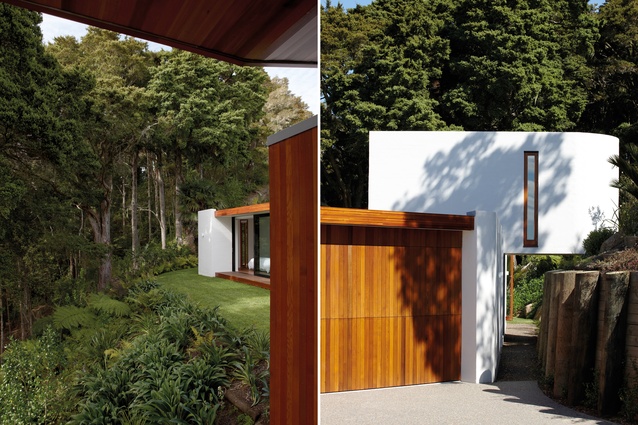Taking flight: Paihia House
A new house with a dramatic gull-wing-shaped roof offers views over the Bay of Islands from every room.
Located in Paihia in the Bay of Islands, where English explorer Captain James Cook first sailed into New Zealand nearly 250 years ago, is a house on a hill overlooking pounamu-coloured waters dotted with lushly vegetated islands. For a house to hold its own among such stunning scenery, it needed great architects to take command so Auckland-based Herbst Architects took on the task.
The design for the Paihia House feels like a departure from some of Herbst’s better-known houses, such as the multi-award-winning Under Pohutukawa house in Piha; it isn’t a bach designed for summer holidays but a permanent residence for its owners. “All we needed to do was capture the view,” says Lance of his and his wife Nicola Herbst’s design. “It is a steep site so we arranged the house to sit along a long and narrow contour in the land and to face the sun in every instance, making a drama of the view by creating two embracing arms in the plan.”
The site is approached from below via a public then a private road. “We wanted a sequence of arrival so, at first, you can’t see the view and then there’s a big reveal when you reach the top of the driveway,” explains Lance. The focus of the main entrance of the house is the view, which can be seen through a central glazed area in the middle of the two ‘arms’ – described by Lance as like two “sticky forms, creating tension”.
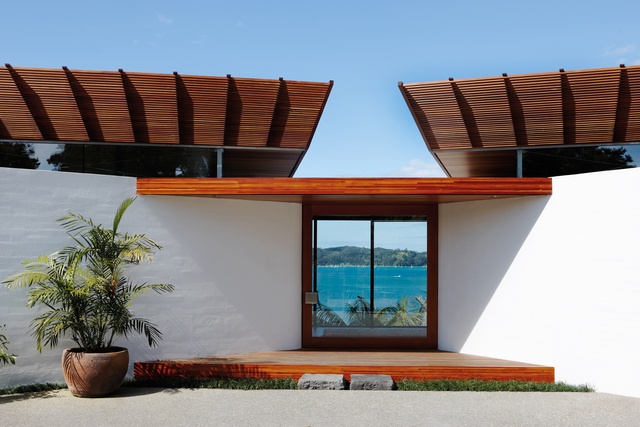
The roof adds to the overall sense of drama, lifting up “like a gull wing” – soaring up towards the east and a well-forested reserve of mainly to-tara and, to the west, a kitchen garden and the entrance courtyard. But the form also cranks all the way around. Timber sunscreens echo the sense of ‘taking off’ but, in a practical sense, they filter sunlight that enters high-level clerestory windows and flows into the interior spaces. Heavyweight masonry elements have been used for the rear structure of the house, while lightweight timber elements cantilever over the precipitous edge of the site, reaching out to the view.
The Paihia House was built to replace an existing house on the site. The owners, a retired couple, wanted a delightful and nuanced design that would accommodate their active family life – with full-grown children and grandchildren coming and going – as well as entertaining friends. Inside, the main living areas are located in one of the two arms, and sleeping spaces and a guest suite are found within the other arm.
The living space transforms into the ultimate entertaining area: an open-plan lounge/kitchen/dining space eases itself into a glazing-enclosed outdoor kitchen area – complete with a coffee station, a fancy imported BBQ from South Africa, a wood-fired pizza oven, a wine cellar and beer taps – which is linked to a lawn and swimming pool area.
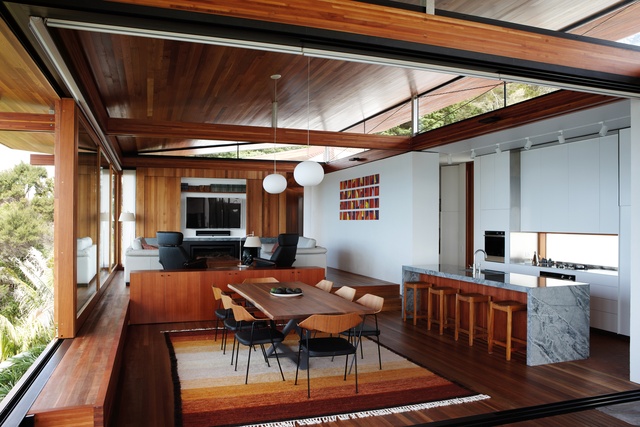
Accessed via a timber-lined passageway is the sleeping arm, consisting of three bedrooms, two bathrooms, a dressing room, a storage area and a laundry room, linked to a drying yard, with a study perched above like a captain’s lookout. At the end of the arm is a guest suite.
Nearly every element of the Paihia House has been imbued with drama: the incredible views from every room, the covetable entertainment spaces, the two-armed plan and gull-wing roof that lifts up at the edges, and the heaviness and the lightness of materials that create contrast throughout. The magic of this rich and mature house design is that it will be fully enjoyed down through the generations.
Material Selector
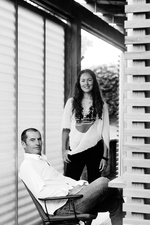
Architects Nicola and Lance Herbst discuss the selection of materials for the Paihia House.
Why did you choose New Zealand red beech?
Since it is selectively picked in the South Island, rather than farmed, it is sustainable. It is hard-wearing and this was the first time that we have used it extensively. It is untreated but was waxed and oil treated and comes in a laminated form so it can be cut to great lengths to create straight posts and beams. We also used it on the soffit and as ceiling lining. Another material we used was spotted gum, an Australian eucalyptus.
We love the hexagonal tiling in the kitchen and scullery; they are quite retro-’70s yet look contemporary in this context.
Yes, they are made from terracotta and are a classic farmhouse tile, purchased from Middle Earth Tiles, brought together with cement grout. We carried the hexagonal pattern into the bathroom tiles, also.

